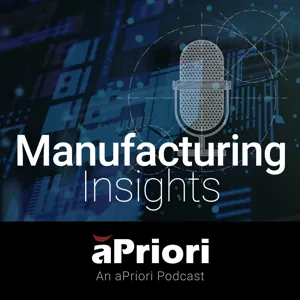Podcast Summary
Creating Portable Solutions for Growing Plants: Innovative solutions like portable greenhouses can provide effective plant growth using science, engineering, and renewable energy. However, ensuring proper conditions like light, water, and medium are crucial for success, and considering environmental impact is important.
With the help of science and engineering, we can create portable solutions for various needs, such as a portable greenhouse. A clear plastic inflatable dome, held up by a fan and powered by a solar panel, can be an effective solution for growing plants in different locations. This concept can be applied to both Earth and space. However, for successful plant growth, light, water, and the right medium are essential. Additionally, the legalization of agriculture at home may lead to new business opportunities, but it's important to consider the impact on the environment, specifically in regards to secondhand smoke. Overall, with innovation and problem-solving, we can create sustainable and efficient solutions for various needs.
Exploring the Limits of 3D Printing at the Atomic Scale: 3D printing's potential extends beyond current capabilities, enabling complex structures, and even space colonization through on-demand resources
The future of additive manufacturing, or 3D printing, goes beyond what we currently know and extends to the atomic scale. This means the potential for creating complex shapes and structures that cannot be achieved through conventional methods. The limits of 3D printing are not yet fully understood, and some believe that even large structures like the Empire State Building could be 3D printed, not by having a printer bigger than the object, but by the printer going around the object indefinitely. Additionally, 3D printing could play a significant role in human space colonization by providing astronauts with the tools and resources they need on demand, rather than having to pack and transport them from Earth. Ultimately, the possibilities for 3D printing are vast and continue to push the boundaries of what is thought possible.
Celebrating Creativity and Innovation through Kinetic Sculpture and Making Things: Encourage creativity and problem-solving skills in young people through making things, from sculpture to technology, and recognize their potential impact on the world.
The maker movement is about creating and innovating, whether it's through sculpture, technology, or other means. During a conversation, the topic of the maker movement came up, and it was described as a celebration of kinetic sculpture and the pursuit of creating things. The speaker encouraged young people to make things and not just play electronic games, suggesting that they could potentially solve complex problems like global warming with their skills. The line between a computer and a robot was also discussed, with the consensus being that a robot has something that moves mechanically, while a computer is a piece of software that performs tasks. The two concepts are merging, but the words and ideas are not interchangeable. Additionally, there was a humorous exchange about the speaker's own role model status, with him being a stand-up comedian and encouraging his son to save the world. The speaker acknowledged the irony of the situation and the importance of allowing children to be kids while also encouraging their creativity and problem-solving abilities. Overall, the conversation emphasized the importance of creating, innovating, and pursuing one's passions, whether it's through art, technology, or other means. It also highlighted the potential impact young people can have on the world and the importance of encouraging their creativity and problem-solving abilities.
Clarifying the difference between robots and computer programs: Bill Nye discussed potential benefits of 3D printing glass or lenses in space for deep space telescopes, including cost savings, reduced complexity, and custom parts.
Robots refer to mechanical or physical entities, while computer programs are purely software. During a conversation, Bill Nye clarified this distinction for someone whose English is not their first language. He also shared his experiences with fans and the impact of his work on science education. Regarding a query from The Planetary Society, Bill Nye discussed the possibility of 3D printing glass or lenses for deep space telescopes like Hubble. This could potentially allow for their assembly in space instead of on Earth before launch. The benefits of this innovation could include cost savings, reduced complexity, and the ability to create custom parts in space. During the conversation, Bill Nye also mentioned his appreciation for the fans who continue to watch and learn from his work, despite his occasional struggles with English. He acknowledged that he might not always be the best choice for certain tasks, such as deriving complex mathematical theorems or writing essays. Overall, the conversation touched on various aspects of science, technology, and education, highlighting the ongoing importance of innovation and the joy of sharing knowledge with others.
Exploring Resourceful Innovations in Space and Manufacturing: Space technology and sustainable manufacturing are advancing through innovative methods to minimize waste and maximize resource usage. Space exploration is looking into manufacturing lenses and mirrors in space using optical plastic, while the maker movement focuses on using recycled materials and renewable energy for sustainable manufacturing.
Space technology and sustainable manufacturing are both exploring innovative ways to utilize resources effectively. For space exploration, there's potential to manufacture lenses and mirrors in space using optical plastic, which seems reasonable given the advancements in plastic technology. On the other hand, the maker movement is focusing on creating sustainable manufacturing processes by using recycled or repurposed materials and renewable energy. Both fields are striving to minimize waste and make the most of available resources. The space industry is considering manufacturing large mirrors in space, but the challenge lies in creating machines that can manufacture these items to exacting specifications in zero gravity. Meanwhile, the maker movement is using recycled materials to create new objects and even grinding down old items to create new shapes. These efforts demonstrate a commitment to reducing waste and making the most of resources in both industries.
Considering the Environmental Impact of Technology and Encouraging Education: Bill Nye discussed the need for environmentally benign materials and regulations in future manufacturing, using plastic waste as a cautionary tale. Education, particularly algebra, is crucial for girls to pursue STEM fields and encourage the next generation of scientists and engineers.
As we continue to advance in technology, particularly with 3D printing and additive manufacturing, it's essential to consider the environmental impact and regulations to prevent potential harm. Bill Nye discussed the potential future of manufacturing where everything would have to be made from environmentally benign materials and regulations would be in place to ensure safety. He used the example of the plastics revolution and the issue of plastic waste as a cautionary tale. The free market could enable this change as manufacturers strive to produce safe and responsible products. However, there are challenges in implementing regulations on a global scale, and it's important to consider the benefits of specialty manufacturing in different parts of the world. Another key point was the importance of education, specifically learning algebra early on, to encourage girls to pursue STEM and engineering fields. Algebra enables abstract thinking, and girls often excel in these subjects during middle school. The ultimate goal is to start introducing letters representing numbers earlier in education to prevent a heavy workload in later grades. Overall, the conversation highlighted the importance of considering the environmental impact of technology and encouraging education to inspire the next generation of scientists and engineers.
Effective communication and expressing complex ideas through writing: Using descriptive language and technology can help convey complex ideas and improve productivity and access to essential resources.
Effective communication and the ability to express complex ideas through writing, including math problems, can lead to better understanding and productivity. The value of language and words in expressing thoughts and ideas has been proven throughout human history, and even if not a single word exists for a specific concept, using descriptive language and adjectives can help convey the intended meaning. Additionally, advancements in technology, such as solar panels and the Internet, can help bridge gaps in production systems and improve access to essential resources like clean water, reliable electricity, and information for people in developing areas like rural Africa. The goal is to make these resources accessible to everyone, leading to increased productivity and economic opportunities. The potential for connecting various electronic devices to a local network is also a promising development, bringing convenience and control to everyday life.
Balancing standardization and customization in technology: Technology's future lies in finding a balance between standardization and customization for secure and distributed information, while allowing for greater accessibility and flexibility through advancements like 3D printing.
Technology is constantly evolving to make our lives more convenient. From smart refrigerators suggesting recipes and telling us when our food was put in, to on-demand streaming and connected appliances, we're moving towards a world where everything is interconnected. However, this interconnectedness raises concerns about security and potential chaos if all machines are controlled by one centralized system. The future of technology lies in finding a balance between standardization and customization, ensuring that information is distributed and secure. The industrial revolution was fueled by standardized parts, but the customization of parts for 3D printing will allow for greater accessibility and flexibility. Ultimately, it's important to remember that technology is a tool, and how we use it is up to us.
Exploring the Progress and Future of Additive Manufacturing: From plastics to metals, 3D printing is advancing in various industries. Household use is becoming more affordable as demand grows. Repair could be an early impactful application. The future may include asteroid mining for raw materials.
Additive manufacturing, or 3D printing, is making significant strides in various industries and materials. Christina Vuletic asked about the progress of using multiple types of materials in 3D printing processes, and the answer is that there's already a range of plastics and even metals being used. As for making 3D printers a household essential like dishwashers and laundry machines, Joey Rudy was told that the more people buy them, the cheaper they'll become, and the engineers will continue to fine-tune them. Matt from Kentucky wanted to know what a classroom with maker things would look like, and the suggestion was to have a printer for every few students, with competitions to create functional and artistic items. Whitney from Seattle asked about the most important use of 3D printing and its impact, and the response was that repair could be a significant early application, with people going to local additive manufacturing places to get worn-out items repaired. And finally, Joseph Clark asked about the possibility of 3D printing robots creating an army to take over the world, and the answer was a simple "yes." In terms of using raw materials from asteroids for 3D printing, it's a possibility that could be 50 years away or potentially much sooner, depending on when we're able to mine asteroids. Overall, the future of additive manufacturing is exciting and full of possibilities.
Exploring Space with 3D Printing and Solar Power: SpaceX uses 3D printing for rocket engines, solar power is becoming affordable for individuals, and technology is making once-impossible feats more achievable.
While we may not be able to 3D print a planet or find platinum asteroids easily, there are exciting advancements in technology that are making space exploration and manufacturing more accessible. For instance, companies like SpaceX are using 3D printing for rocket engines, and solar power is becoming more affordable and accessible for individuals. However, safety considerations, such as the need for electricians, still apply. The Maker Movement, which includes 3D printing, should be encouraged to be experimental and free, but also supported with resources and education. Overall, technology is making once-impossible feats more achievable, and we should continue to explore and innovate.






